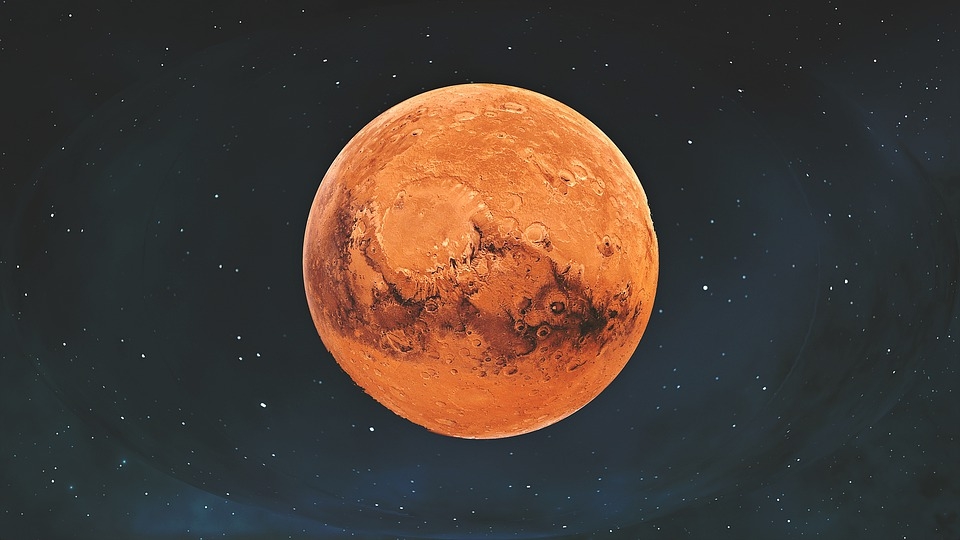Over the years, there is still a lot about Mars that we do not know until today. An analysis of the composition of a Martian meteorite was able to shed light on the composition of our neighboring planet.
Scientists from the University of Copenhagen analyzed a meteorite from Mars and found that the Red Planet may be abundant in zircon. They analyzed the meteorite NWA 7533 also known as Black Beauty and was first discovered in 2011 at a desert in Morocco. Aside from finding an abundance of zircon on Martian soil, they also discovered that a large amount of zircon came from the Red Planet’s core. The scientists also made use of the data containing the age and isotope compositions of zircon. Should this be proven, then it would shed more light on the composition of Mars.
“We were quite surprised and excited when we found so many zircons in this Martian meteorite,” said the study’s leader, Professor Martin Bizzarro of the GLOBE institute. “Zircon are incredibly durable crystals that can be dated and preserve information that tells us of their origins. Having access to so many zircons is like opening a time window into the geologic history of the planet.”
The team was able to find 60 zircons out of 15 grams of the Martian space rock, and most of the crystals were 4.5 billion years old. This is equivalent to the planet’s age. However, they also found some zircons that were significantly younger between 1,500 to 300 million years old.
Previously, it is known that Mars once held bodies of water on its surface, similar to Earth. A group of scientists in the United States was able to figure out how the Red Planet lost its water over time. With the use of NASA’s MAVEN spacecraft also known as Mars Atmosphere and Volatile Evolution, they were able to come to the conclusion that certain processes bring water vapor up to the atmosphere where they are ejected into space. According to data from MAVEN, the loss of water on the Red Planet also varied during the different seasons.



 Could a telescope ever see the beginning of time? An astronomer explains
Could a telescope ever see the beginning of time? An astronomer explains  Dark energy is one of the biggest puzzles in science and we're now a step closer to understanding it
Dark energy is one of the biggest puzzles in science and we're now a step closer to understanding it  Eggs from men, sperm from women: how stem cell science may change how we reproduce
Eggs from men, sperm from women: how stem cell science may change how we reproduce  Why some people don't trust science – and how to change their minds
Why some people don't trust science – and how to change their minds  Why is the universe ripping itself apart? A new study of exploding stars shows dark energy may be more complicated than we thought
Why is the universe ripping itself apart? A new study of exploding stars shows dark energy may be more complicated than we thought  Orbital resonance − the striking gravitational dance done by planets with aligning orbits
Orbital resonance − the striking gravitational dance done by planets with aligning orbits  Synthetic human embryos let researchers study early development while sidestepping ethical and logistical hurdles
Synthetic human embryos let researchers study early development while sidestepping ethical and logistical hurdles  Black hole, neutron star or something new? We discovered an object that defies explanation
Black hole, neutron star or something new? We discovered an object that defies explanation  The brain is the most complicated object in the universe. This is the story of scientists’ quest to decode it – and read people’s minds
The brain is the most complicated object in the universe. This is the story of scientists’ quest to decode it – and read people’s minds  Doing science in Antarctica has harmed an environment under great pressure. Here's how we can do better
Doing science in Antarctica has harmed an environment under great pressure. Here's how we can do better  Alpha, beta, theta: what are brain states and brain waves? And can we control them?
Alpha, beta, theta: what are brain states and brain waves? And can we control them?  Our survey of the sky is uncovering the secrets of how planets are born
Our survey of the sky is uncovering the secrets of how planets are born  Archeoastronomy uses the rare times and places of previous total solar eclipses to help us measure history
Archeoastronomy uses the rare times and places of previous total solar eclipses to help us measure history  The brightest object in the universe is a black hole that eats a star a day
The brightest object in the universe is a black hole that eats a star a day  The mystery of consciousness shows there may be a limit to what science alone can achieve
The mystery of consciousness shows there may be a limit to what science alone can achieve  Tatahouine: 'Star Wars meteorite' sheds light on the early Solar System
Tatahouine: 'Star Wars meteorite' sheds light on the early Solar System 































